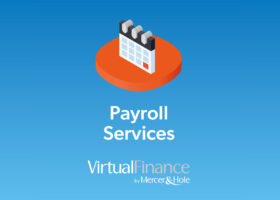On Sunday 10 May the Prime Minister outlined the first steps to the easing of lockdown and over the subsequent days more detailed guidance emerged about how the nation could expect the plan to unfold. In addition, the Chancellor announced that the furlough scheme, a lifeline for 1,000’s of businesses (and millions of employees) during the crisis, was to be extended until 31 October.
A few more days have now elapsed since the announcements and many businesses are hard at work reading the government guidance and preparing for a COVID secure resumption/ramping up of trade.
Every industry and every business will have its own challenges to overcome during the coming weeks and months as financial support packages are withdrawn and the accrual of debt during the lockdown becomes a reality. However, now is a time to look forward, to plan for a brighter tomorrow, and to decide where you and your business want to be as normal life returns during the second half of 2020.
The old adage, failure to plan is planning to fail, has never been more apt and with this in mind I am pleased to set out below my Top Ten Tips to consider when planning a route of lockdown for your business. I hope you will find the below as helpful as our initial Top Ten Tips for dealing with financial distress published at the outset of the crisis.
1.Safety first – be COVID secure, read the guidance and put in practice a safe working/trading environment.
2. Where is your business today? It is important to start off on a firm footing even if it is going to be uncomfortable understanding the extent of the damage caused by coronavirus. Decisions and plans can only be made from a position of knowledge. Key issues to identify will be:
- Cash/current funding available
- Liabilities accrued
- Debts to be collected -acceptable payment plans from customers
- Products/services you will start to supply
- Supply chains and your route to market
A clear, viable route map can only be based upon a solid understanding of where your business is today. You will need stakeholders to buy into your journey during the coming weeks and months and they will only believe in your proposals if they are realistic.
3. Destination – There are a lot of decisions which will be needed over the coming weeks and months. It is important to retain an overall vision of where your business is headed so that short term decisions do not unnecessarily impede your long-term future.
4. The journey – how do you get from where you are now to your destination? In order to plot your journey you will need certain supporting information:
- Stress tested cashflow and profit forecasts
- An understanding of which employees you need to return to work and when, and a communication plan for your employees
- Stakeholder management programme – what needs to be communicated to whom and when.
5. Documentation – documenting steps 2 – 4 above gives directors a defence should things move against you. It shows that at the time of making the decision to continue to trade there was a route map back to a successful viable company, which will provide some protection against claims where it is alleged you did the wrong thing.
6. Don’t lose the unexpected gains – while predominantly the last few months have been a testing time, some benefits have accrued. The use of technology, flexible working, and innovation have resulted in efficiencies and potential for new products and services.
7. Opportunities – you may be able to improve market share, undertake key vertical integration to secure supply chains or sales services, shrink property or non-essential overhead cost, rationalise group structures and focus on core products or those with maximum potential, leaving behind cost and resource-intensive services.
8. Funding – money is cheap and available, bounce back loans and CBILS, as well as traditional lending streams can provide you with the cash required to undertake the restructuring your plan requires to move to a brighter future.
9. Negotiation – solid plans allow you to focus on the most important areas of your business and understand where you are happy to walk away. This will allow you to understand your negotiating position with all stakeholders, will make for best outcomes for your business, and ultimately your stakeholders as you move from survival mode to being able to thrive.
10. Plan B – Steps 1 – 9 above will also help you to assess points of weakness and stress within your plan if turnover doesn’t hit a certain level, if certain negotiations are unsuccessful or if a second wave hits the economy. Knowing the falling off points will help you to act quickly and decisively should it be necessary.
When you need to seek advice, it will be on the basis of assessing the prospect of rescuing the company as a going concern, or perhaps restructuring debts into manageable, realistic repayment plans. To protect the company or the business you may be advised to consider a company voluntary arrangement or administration. Neither would be a sign of failure, but rather a spell of intensive care, being looked after by specialists. Having a plan B is essential for SMEs to ensure that directors do not sleepwalk into a position of personal liability.
For advice on planning your route map to recommencement of trade, or establishing your Plan B, please do not hesitate to contact one of our business advisory or restructuring partners.







 7 mins
7 mins 

